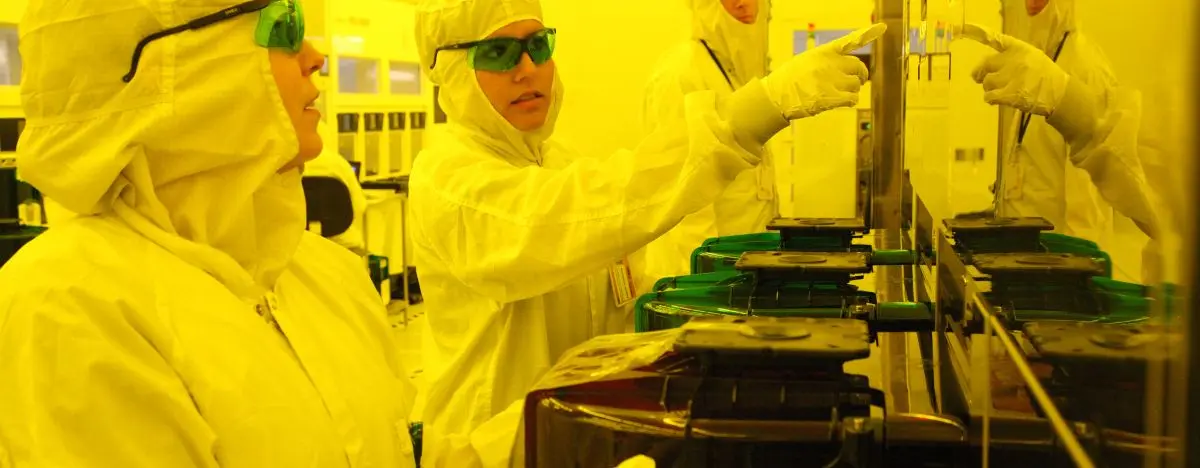The U.S. National Science Foundation (NSF) has recently announced 24 research and education projects with a total investment of $45.6 million. This funding, including support from the "CHIPS and Science Act of 2022," aims to advance new semiconductor technologies and manufacturing while also focusing on workforce development. These projects are a result of a public-private partnership between the NSF and four companies: Ericsson, IBM, Intel, and Samsung.

The overarching goal of this investment is to train the next generation of talent in the semiconductor industry, thus promoting economic growth from the middle out and bottom up. By supporting innovative and transdisciplinary research, these projects seek to drive breakthroughs in semiconductors and microelectronics while addressing the national need for a reliable and secure supply of cutting-edge semiconductor technologies, systems, and professionals.
In order to develop future semiconductors and microelectronics, a holistic and collaborative approach is required, involving experts from both academic and industrial sectors. This approach, called "co-design," considers various factors such as performance, manufacturability, recyclability, and environmental sustainability of materials, devices, and systems.
The NSF's FuSe program will play a crucial role in accelerating the development of the U.S.-based workforce and knowledge needed for innovative semiconductor and microelectronics. This initiative aligns directly with the goals of the "CHIPS and Science Act of 2022."
For Fiscal Year 2023, the FuSe program will support 24 research and education projects through 61 awards to 47 institutions. These projects cover three main research topics:
- Collaborative Research in Domain-Specific Computing: This topic includes projects such as bio-inspired sensorimotor control for robotic locomotion, co-designing edge architectures with hetero-integrated silicon-CMOS and electrochemical random-access memory, and enabling photonic computing engines through hetero-integration, among others.
- Advanced Function and High Performance by Heterogeneous Integration: Projects under this topic focus on co-designed systems for in-sensor processing with sustainable nanomaterials, collaborative optically disaggregated arrays of extreme-MIMO radio units, and deep learning and signal processing using silicon photonics and digital CMOS circuits, among others.
- New Materials for Energy Efficient, Enhanced-Performance, and Sustainable Semiconductor-Based Systems: This topic includes projects such as the development of GeSnO2 alloys for next-generation semiconductor devices, heterogeneous integration of III-Nitride and Boron Arsenide for enhanced thermal and electronic performance, and high-throughput discovery of phase change materials for co-designed electronic and optical computational devices, among others.
In addition to NSF's significant investment, Ericsson, IBM, Intel, and Samsung will provide annual contributions to support these projects. This public-private partnership aims to inform research needs, catalyze breakthroughs, accelerate technology translation into the market, and prepare the future semiconductor workforce through practical experiences. It also addresses the increasing demand for semiconductors in the U.S.
This partnership between the NSF and leading companies builds upon previous NSF investments in training and diversity within the semiconductor manufacturing workforce. The NSF has engaged in similar collaborations in the past, including partnerships with the Semiconductor Research Corporation, Intel Corporation, and Micron Technology Inc.
Notable Quotes:
- IBM: IBM acknowledges the need for semiconductor innovation across various aspects, ranging from materials and devices to heterogeneous integration, advanced packaging, and compute architectures. IBM supports the FuSe program's investment, as it aims to empower the next generation of innovators in the semiconductor industry.
- Intel: Intel recognizes the importance of creating a robust and diverse ecosystem of skilled semiconductor talent to ensure the success of the CHIPS and Science Act. They emphasize the significance of public-private partnerships that provide equitable access to hands-on learning opportunities. Intel highlights the positive impact of the NSF FuSe program on workforce development, including collaboration with minority-serving institutions and community colleges, which will significantly contribute to technician and undergraduate education.
- Ericsson: Ericsson emphasizes the importance of semiconductor innovation for the development of next-generation communication systems. As a participant in the NSF's FuSe program, Ericsson is pleased to support 6G innovation and workforce development in collaboration with leading U.S. academia.
- Samsung: Samsung acknowledges the significance of driving American innovation and creating job opportunities in the semiconductor industry. As a foreign company with a substantial manufacturing presence in the U.S., Samsung is committed to expanding manufacturing, research and development, and the skilled semiconductor workforce. Their collaboration with the NSF exemplifies this commitment and highlights the importance of addressing challenges and driving progress in innovation while cultivating the semiconductor talent pipeline.







